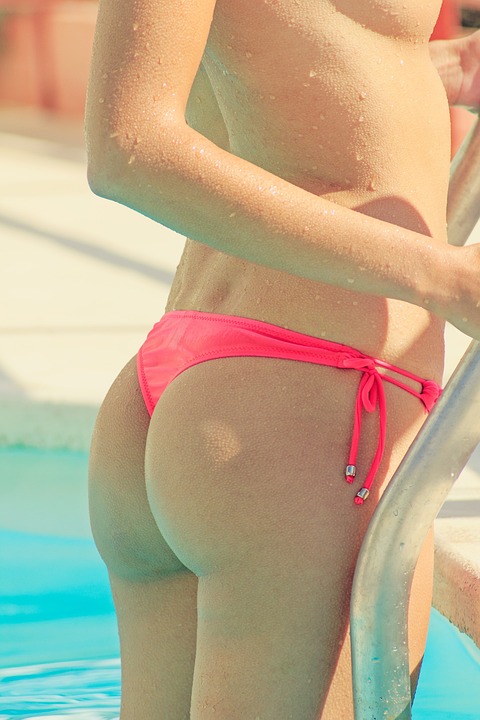The Bikini Area Pimple: Understanding and Treating This Common Skin Condition
As summer approaches, many women are getting ready to hit the beach and show off their bodies in bikinis. However, for some, the thought of wearing a bikini can be daunting, especially if they have pimples in their bikini area. Bikini area pimples can be embarrassing and uncomfortable, but they are also very common. In this article, we will discuss the causes of bikini area pimples, how to prevent them, and how to treat them.
What Causes Bikini Area Pimples?
Bikini area pimples are caused by the same factors that cause pimples anywhere else on the body. Pimples occur when the hair follicles become clogged with oil, dead skin cells, and bacteria. The bacteria that cause pimples thrive in warm, moist environments, which is why the bikini area is a common location for pimples.
There are several factors that can contribute to the development of bikini area pimples. These include:
1. Friction: Tight clothing, such as bathing suits, can cause friction in the bikini area, which can irritate the skin and lead to pimples.
2. Shaving: Shaving the bikini area can cause irritation and razor burn, which can lead to pimples.
3. Sweating: Sweat can clog the hair follicles and contribute to the development of pimples.
4. Hormones: Hormonal changes, such as those that occur during menstruation, can cause pimples to develop in the bikini area.
5. Poor hygiene: Not keeping the bikini area clean can lead to the buildup of bacteria and oil, which can lead to pimples.
How to Prevent Bikini Area Pimples
Preventing bikini area pimples involves taking steps to reduce the factors that contribute to their development. Here are some tips to help prevent bikini area pimples:
1. Wear loose-fitting clothing: Tight clothing can cause friction in the bikini area, which can irritate the skin and lead to pimples. Opt for loose-fitting clothing instead.
2. Use a gentle cleanser: Use a gentle cleanser to keep the bikini area clean and reduce the buildup of bacteria and oil.
3. Moisturize: Use a moisturizer to keep the skin in the bikini area hydrated and prevent dryness, which can lead to pimples.
4. Avoid shaving: If possible, avoid shaving the bikini area. If you must shave, use a sharp razor and shaving cream to reduce irritation.
5. Stay dry: After swimming or sweating, make sure to dry the bikini area thoroughly to prevent the buildup of bacteria and oil.
Treating Bikini Area Pimples
If you already have bikini area pimples, there are several things you can do to treat them. Here are some tips:
1. Don’t pop pimples: Popping pimples can cause them to become infected and lead to scarring. Instead, apply a warm compress to the area to help draw out the pus.
2. Use an over-the-counter acne treatment: Over-the-counter acne treatments that contain benzoyl peroxide or salicylic acid can help to reduce the size and redness of pimples.
3. Apply tea tree oil: Tea tree oil has antibacterial properties and can help to reduce the inflammation of pimples.
4. Use a topical antibiotic: If the pimples are particularly severe, a doctor may prescribe a topical antibiotic to help clear them up.
5. Consider laser treatment: In severe cases, laser treatment may be necessary to treat the pimples and prevent scarring.
The Bottom Line
Bikini area pimples can be embarrassing, but they are also very common. Preventing bikini area pimples involves taking steps to reduce the factors that contribute to their development, such as wearing loose-fitting clothing and keeping the area clean. If you already have bikini area pimples, there are several things you can do to treat them, including using over-the-counter acne treatments and applying tea tree oil. If the pimples are particularly severe, a doctor may prescribe a topical antibiotic or recommend laser treatment. With the right care and treatment, you can get rid of bikini area pimples and feel confident in your bikini this summer.
Top Questions Concerning Bikini Area Pimple
What causes bikini area pimples?
Bikini area pimples can be caused by a variety of factors, including ingrown hairs, friction from tight clothing or underwear, poor hygiene, bacterial infections, and hormonal imbalances. The most common cause is ingrown hairs, which occur when hair follicles become clogged with dead skin cells and oil. Friction from tight clothing or underwear can also cause irritation and inflammation, leading to the development of pimples. Poor hygiene can also play a role by allowing bacteria to thrive in the area. Hormonal imbalances can cause an increase in oil production, which can lead to pimples.
1. Ingrown hairs
2. Friction from tight clothing or underwear
3. Poor hygiene
How can bikini area pimples be prevented?
Preventing bikini area pimples involves maintaining good hygiene practices and avoiding activities that can cause irritation or inflammation. Keeping the area clean and dry is important, as is wearing loose-fitting clothing and underwear. Exfoliating regularly can help prevent the buildup of dead skin cells and oil that can lead to ingrown hairs. Additionally, consider using products specifically designed for the bikini area, such as gentle cleansers and moisturizers.
1. Maintaining good hygiene practices
2. Avoiding activities that can cause irritation or inflammation
3. Using products specifically designed for the bikini area
What are the treatment options for bikini area pimples?
Treatment options for bikini area pimples depend on the cause and severity of the condition. For mild cases, over-the-counter topical treatments containing benzoyl peroxide or salicylic acid may be effective. For more severe cases, a doctor may prescribe antibiotics or topical retinoids. In some cases, laser hair removal may be recommended to prevent ingrown hairs from forming.
1. Over-the-counter topical treatments containing benzoyl peroxide or salicylic acid
2. Prescription antibiotics or topical retinoids
3. Laser hair removal
When should I see a doctor for bikini area pimples?
If bikini area pimples are persistent, painful, or accompanied by other symptoms such as fever or swelling, it is important to see a doctor. Additionally, if you have a history of severe acne or are experiencing hormonal imbalances, it is important to seek medical attention.
1. Persistent or painful pimples
2. Symptoms such as fever or swelling
3. History of severe acne or hormonal imbalances
Are there any home remedies for treating bikini area pimples?
There are several home remedies that may help treat bikini area pimples, including applying tea tree oil, aloe vera gel, or witch hazel to the affected area. Additionally, soaking in a warm bath with Epsom salt or applying a warm compress can help reduce inflammation and promote healing. It is important to note, however, that these remedies may not be effective for everyone and should not be used as a substitute for medical treatment.
1. Tea tree oil, aloe vera gel, or witch hazel
2. Soaking in a warm bath with Epsom salt
3. Applying a warm compress
Introduction
Bikini area pimples are a common skin problem experienced by many people. They are often caused by ingrown hair, poor hygiene, and clogged pores. However, there are several misconceptions surrounding bikini area pimples. These misconceptions can lead to ineffective treatment methods and can worsen the condition. In this article, we will discuss some of the common misconceptions about bikini area pimples.
Misconception 1: Shaving Causes Bikini Area Pimples
One of the most common misconceptions about bikini area pimples is that shaving causes them. While shaving can cause razor burns and ingrown hair, it is not the root cause of pimples. Pimples are caused by clogged pores, which can happen for various reasons, including hormonal changes, poor hygiene, and friction. Shaving can exacerbate the condition, but it is not the sole cause.
Misconception 2: Pimples in Bikini Area are Always Painful
Another common misconception is that pimples in the bikini area are always painful. While some pimples can be painful, others may not cause any discomfort. The pain associated with pimples is usually caused by inflammation, which is a normal immune response to infection. However, not all pimples are infected, and therefore, not all pimples cause pain.
Misconception 3: Pop Pimples to Get Rid of Them
Many people believe that popping pimples is an effective way to get rid of them. However, this is a common misconception that can lead to more harm than good. Popping pimples can cause the infection to spread, leading to more pimples. It can also cause scarring, which can be difficult to get rid of. The best way to get rid of pimples is to let them heal naturally or seek professional treatment.
Misconception 4: Only Women Get Bikini Area Pimples
Another common misconception is that only women get bikini area pimples. However, this is not true. Both men and women can get pimples in the bikini area. Men may experience pimples due to friction caused by tight clothing or shaving, while women may experience pimples due to hormonal changes or poor hygiene. Therefore, it is important not to make assumptions based on gender.
Misconception 5: Home Remedies are Always Effective
There are many home remedies that are said to be effective in treating pimples. However, this is not always the case. While some home remedies may work for some people, they may not work for others. In addition, some home remedies can cause more harm than good. For example, applying toothpaste to pimples can cause irritation and even burn the skin. Therefore, it is important to be cautious when trying home remedies and to seek professional advice if the condition persists.
Conclusion
In conclusion, there are several common misconceptions surrounding bikini area pimples. It is important to understand the root causes of pimples and to avoid ineffective treatment methods. By seeking professional advice and maintaining good hygiene practices, it is possible to treat and prevent pimples in the bikini area.
Bikini Area Pimple
#Bikini #Area #Pimple


